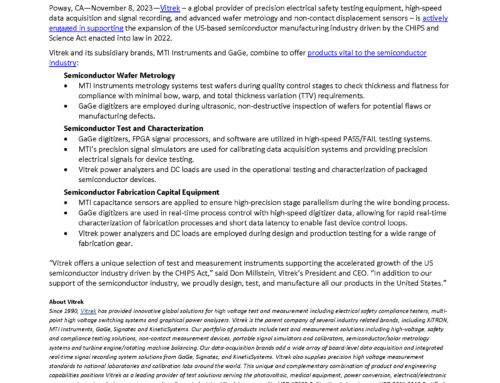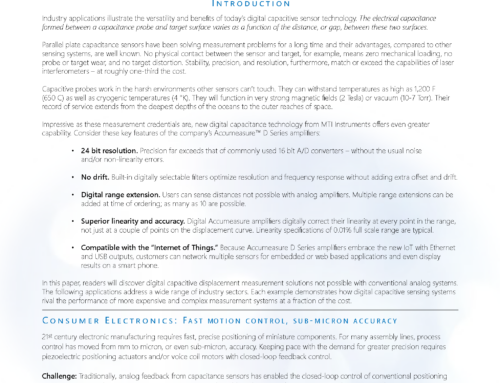Industry
Semiconductor
Applications
Lithography Optics Position Focus
Measurement Type
Positioning
Description
When it comes to photolithography, how accurate are our sensors?

Photo by D. Carr and H. Craighead, Cornell – The world’s smallest guitar is 10 micrometers long — about the size of a single cell — with six strings each about 50 nanometers, or 100 atoms, wide. Made by Cornell University researchers from crystalline silicon, it demonstrates a new technology for a new generation of electromechanical devices.
Even the world’s smallest guitar’s 2 micron dimension is no trouble at all for the MTI capacitance probes. Capacitance systems excel in high resolution focusing of complex lens systems such as those found in atomic force microscopes, vision inspection machines and photolithography tools.
In a multi-million dollar photolithography tool, high accuracy, nanometer resolution and maximum thermal stability are absolutely critical to maintain proper focus and obtain integrated circuit line widths as small as 7 nanometers. Most systems demand low power consumption and minimum heat dissipation to eliminate any adverse affects from temperature gradients. MTI’s Application and Design team developed a multi-channel, capacitance based solution featuring a measurement accuracy of 0.1 nanometers. That’s .0001 microns!
MTI designed the probe amplifier for direct integration into the customer’s control system utilizing the existing power supply and system bus. Special design consideration was given to thermal stability and long term electronic drift to provide years of fault free operation in a production environment.

MTI’s capacitance systems work as well as if not better than laser interferometer system at far less cost. When you need the finest detail controlled and monitored, get in touch with an MTI engineer to help orchestrate a solution for you.


